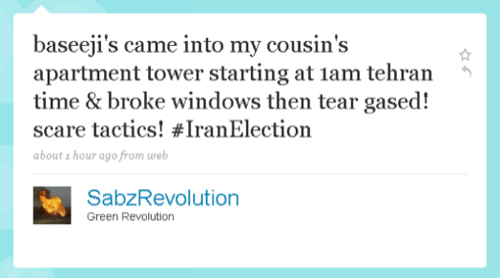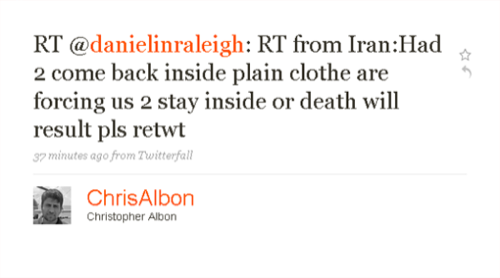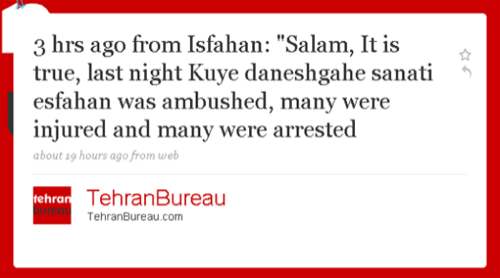The Twitter firehose is glutted with retweets, hashtags, and information of every possible bias and contradition surrounding one topic: The recent election in Iran and supposed fraud in tallying votes for the losing candidate, Mir-Hossein Mousavi.

In the aftermath of the election, during which a (some say statistically improbable landslide) victory for Mahmoud Ahmadinejad was announced, the social media buzz grew into a roar as a meme began to circulate: Where Is My Vote. A website, several Facebook pages, and now thousands of tweets have ensured few social web users have not yet heard of the controversy and the Iranian government’s response of censorship.
Network Upgrade Postponed
On the official Twitter blog today, cofounder
that scheduled maintenance on the app, a critical network upgrade, would be postponed.
“In coordination with Twitter,” Stone wrote, “our network host had planned this upgrade for tonight. However, our network partners at NTT America recognize the role Twitter is currently playing as an important communication tool in Iran… Our partners are taking a huge risk, not just for Twitter, but also the other services they support worldwide–we commend them for being flexible in what is essentially an inflexible situation. We chose NTT America Enterprise Hosting Services early last year specifically because of their impeccable history of reliability and global perspective.”
Citizens Had Taken to Twitter to Report and Find News
As major
, at least in the eyes of users, to give adequate or accurate reports on the developing situation in Iran following the election, citizens and other invested individuals
to spread different versions of the story. Many of the tweets coming from this area are confusing, biased, and contradictory. Few of the sources are verifiable. Nevertheless, the Twitter stream has become the go-to source for
and coverage of events in Iran.
Although, as noted above, sources cannot be verified at this time, the vast majority of tweets we have seen tell stories of violent military reactions to protesters:



Many more tweets are linking to news coverage and photo or video evidence of what is happening on the ground during these protests.
Iranian Censorship of the Social Web
Although
Twitter and Facebook were both reportedly blocked
inside Iran since May 23, before the election, many Iranians have found ways to continue to use the social web to distribute their stories and spread their news.
The Wall Street Journal reported this afternoon that many inside the country have resorted to overseas proxies to continue to use the websites. However, as proxies appeared on the web, they were gradually blocked. Many are now calling for users to stop publicly announcing proxies and use private channels such as email instead.
Blocked Hashtags, Changed Locations, & Other Misinformation
There have even been reports that the Iranian government had managed to block the hashtag #iranelection. Many users began using hashtags such as #green and #iran9. However, others state it is unlikely that a single hashtag could be blocked. In all probability, the entire domain would be blocked by the ISP or across a range of IP addresses.
Still more non-Iranian users are changing their Twitter profile locations and time zones to reflect that they are in Iran. These users are often also posting green-tinted versions of their avatars. Some say this is a show of solidarity; other users insist this action will somehow “screw with the government’s head.”
As one Twitter user said and as several others would likely agree, “Most of the people on Twitter are [expletive deleted] retarded.”
Changing one’s avatar and location would likely do little to affect the Iranian government; these actions are simply a sign to a user’s followers that he or she has at least a cursory interest in Iran current events.
As the conflict continues, Twitter users are reminded that the best, most useful information to share is that which is most verifiable and hence most likely to be accurate. Retweeting biased or exaggerated accounts damages any cause by feeding a hype cycle and drawing attention away from the heart of the matter. At the very least, users should attempt to search for and verify information before passing it on.









